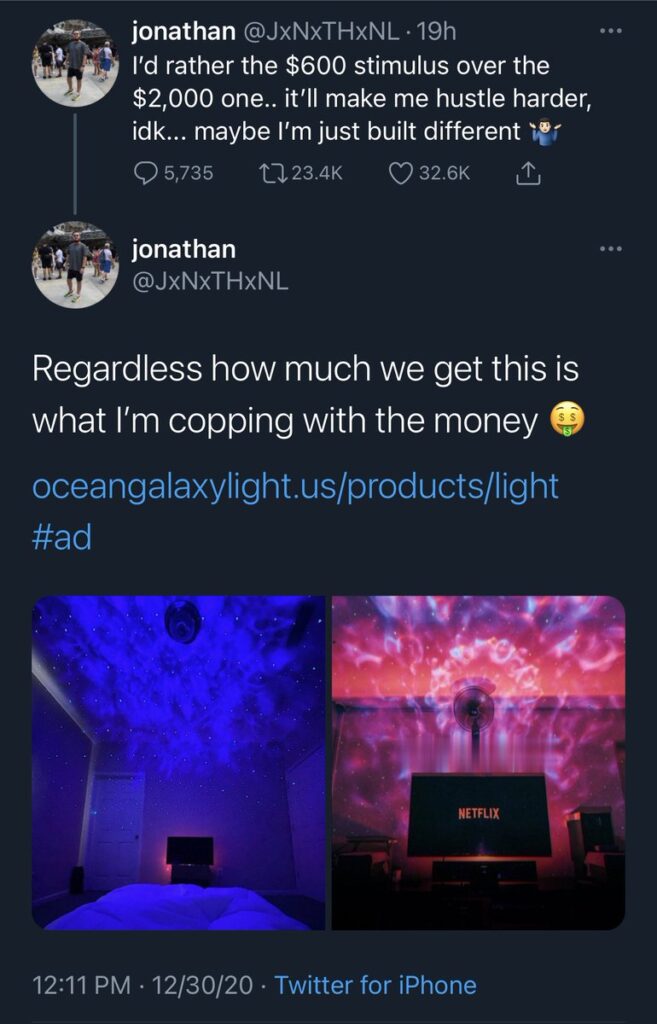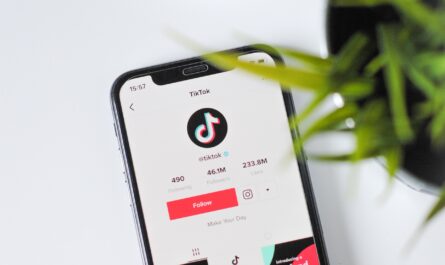By Jerrod Woo
If you have ever noticed a Twitter account promoting skincare products and galaxy skylights under their viral tweets, then you’re not alone. A recent Twitter marketing strategy, commonly referred to as clout mining, is when a company sends a direct message to a user with a viral tweet and offers them money to “plug” their products under the viral tweet. This way, the user can theoretically profit off their viral tweet while the company gets exposure and sales as the tweet gets more engagement. For the most part, it’s a pretty harmless and simple relationship.
This brings up the question: is this smart marketing or a lazy attempt to get sales? Although the payout to the owner of the viral tweet is usually a small amount ranging from $15-$50, it can be pretty surprising how much the companies could end up making. Some companies even pay a small amount for each engagement they receive. Since the plugged tweets include a direct link to purchase the products, all someone needs to do is click the link and enter their credit card information. Next thing they know, they have a galaxy light pattern on their bedroom ceiling.
Ocean Galaxy Light, a company who actively participates in clout mining, reported that they had made “around $7,000 to $8,000 from Twitter” in July of 2020 alone. With viral tweets popping up every day, hypothetically there is an endless amount of money that they can make. They just need to make sure that each time they payout a viral user, they can retain the same number of sales.
Some users who are paid for clout mining disclose that the promoting tweet is an advertisement, but this entirely up to the user. Because the companies reach out through direct messaging, they created a “loophole” in Twitter’s terms of service. Twitter states that people who are paid to tweet are supposed to label it as an advertisement, but because these small deals happen through DMs and outside of Twitter’s advertising system, Twitter doesn’t search for violators. This is just another clever way that companies are making clout mining a more frequent occurrence.
At the end of the day, people’s opinion on clout mining are subjective, and users aren’t forced in any way to promote these products. It all depends on if the user wants quick cash and a harmless plug. Who knows, maybe one of us might have the opportunity to participate in clout mining. So even though it can get extremely annoying seeing the same products being promoted under viral tweets, it actually might serve as a successful and legitimate marketing tactic.





This post was really interesting. I see these ads all the time, but I never really looked into the companies or how successful or profitable this really is. It seems that it’s harder for popular Twitter accounts to make money off their content unlike YouTubers, Instagram Influencers, or even TikTokers at this point. On one hand, I’m glad that those on Twitter can start monetizing their content with these clout mining ads, but from a normal Twitter users perspective, it’s super annoying scrolling through all of them to get to the comments. Maybe if these companies start standardizing a decent amount paid per engagement, then clout mining would be more understandable and acceptable. For now though, in my opinion, it’s a bust.
Clout mining is a new concept that I haven’t heard of. This was definitely super interesting because ads are EVERWHERE! I’ve seen the hashtag “#ad” on so many posts, and I always think it’s interesting to see how much companies are paying these influencers to post the ad. Personally, not a fan of seeing ads on social media, but it is a good strategy for companies/brands to use for promo.
Clout mining has been an interesting topic to discuss. To respond to your comment about this possibly being considered a “lazy sales attempt”: I think when it comes to sales any way possible that you can make it happen is worth trying. I would be interested in seeing the data behind these advertisements and how many people actually engage.